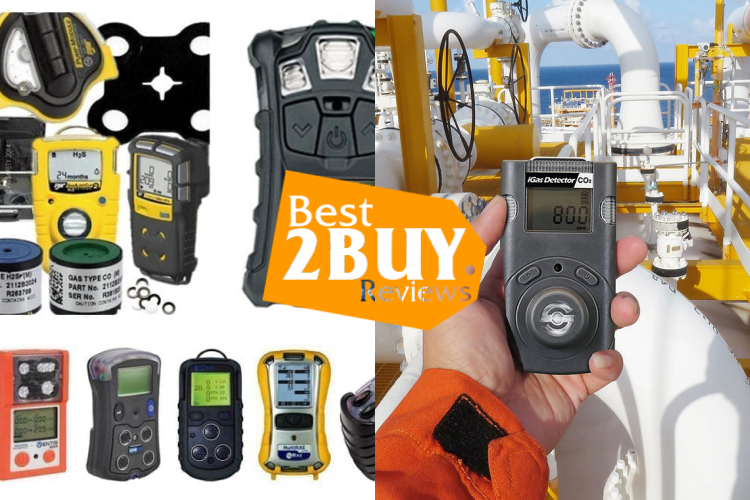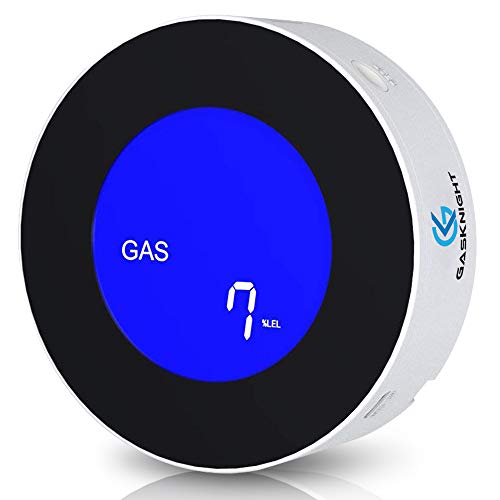Gas Detectors: Everything You Need To Know

In a variety of sectors and settings, the existence of perilous gases presents a substantial threat to the well-being and security of individuals. Gas detectors assume a pivotal role in reducing this peril by identifying and tracking the concentrations of noxious gases in the atmosphere. These instruments are engineered to spot particular gases and warn individuals about potential hazards, enabling prompt responses. This article will delve into the significance of gas detectors, the different varieties available, and their applications in safeguarding hazardous environments.
The Importance of Gas Detectors
Gas detectors play a pivotal role in ensuring workplace safety across a range of industries, including oil and gas, mining, chemical manufacturing, and more. These devices serve as indispensable early warning systems, delivering real-time data on the existence and concentration of hazardous gases. Through their timely detection capabilities, gas detectors play a vital role in averting accidents, injuries, and, in the worst cases, fatalities.
The primary objective of gas detectors is to oversee air quality and pinpoint the presence of dangerous gases, whether they are toxic, flammable, or explosive. Continuously monitoring gas levels, these devices are designed to activate alarms when concentrations surpass predefined thresholds. This critical functionality enables workers to swiftly evacuate the affected area, initiate emergency protocols, or adopt appropriate measures to mitigate potential risks.
Types of Gas Detectors
Gas detectors come in a variety of types, each tailored to the detection of specific gases or suitable for different environmental conditions. The most prevalent types encompass:
- Catalytic Bead Sensors: These sensors excel at identifying flammable gases such as methane, propane, and butane. Their operation revolves around quantifying the heat generated as a combustible gas reacts with a heated catalyst.
- Electrochemical Sensors: These sensors are deployed for the detection of toxic gases like carbon monoxide, hydrogen sulfide, and chlorine. Their functionality hinges on measuring the electrical current generated when a gas interacts with an electrode.
- Infrared Sensors: Infrared gas detectors prove effective in spotting hydrocarbon gases, including methane and propane. Their operation revolves around gauging the absorption of infrared light by gas molecules.
- Ultrasonic Detectors: Primarily employed for gas leak detection, these detectors rely on ultrasonic sound waves to discern the sounds produced by escaping gas.
- Photoionization Detectors: These detectors are adept at detecting volatile organic compounds (VOCs) and other gases with low ionization potentials. They work by ionizing gas molecules through the use of ultraviolet light and then measuring the resultant electrical current.
- Metal Oxide Semiconductor Sensors: These sensors are commonly used for the detection of gases like carbon monoxide and flammable gases. They function by monitoring the alteration in electrical resistance when gas molecules interact with a metal oxide surface.
Working Principles
Gas detectors utilize various technologies for the detection and quantification of gas concentrations. Common detection methods encompass:
- Catalytic Sensors: These sensors identify flammable gases by gauging the heat generated during the gas molecules' reaction on a catalytic surface. They are commonly employed in the detection of hydrocarbons.
- Electrochemical Sensors: These sensors employ chemical reactions to generate an electrical current that correlates with the gas concentration. They are frequently utilized for detecting hazardous gases like carbon monoxide and hydrogen sulfide.
- Infrared Sensors: Infrared sensors measure the absorption of particular wavelengths of infrared light by gases. They prove effective in the detection of gases such as carbon dioxide and methane.
- Photoionization Detectors (PID): PID detectors utilize ultraviolet light to ionize gas molecules, creating an electrical current that can be quantified to ascertain gas concentration. They exhibit sensitivity to volatile organic compounds (VOCs).
- Semiconductor Sensors: Semiconductor sensors are employed in gas detectors designed for consumer use and are often incorporated into home carbon monoxide detectors. They rely on variations in electrical resistance when exposed to specific gases.
Applications of Gas Detectors
Gas detectors play a vital role across a diverse array of industries and settings where potentially hazardous gases may be present. Here are some common applications:
- Oil and Gas Sector: Gas detectors are indispensable in the oil and gas industry, finding use in oil refineries, drilling rigs, and pipelines. Their primary function is to continuously monitor for the presence of flammable gases, effectively preventing explosions and fires.
- Mining Operations: In the challenging environment of underground mines, gas detectors are employed to identify gases such as methane, known for its explosive properties. These detectors are instrumental in safeguarding miners and averting potential accidents.
- Chemical Manufacturing Facilities: Gas detectors find application in chemical plants where they serve as a critical safety measure. They are deployed to monitor and promptly detect the release of toxic gases, ensuring that workers are shielded from exposure to hazardous substances.
- Wastewater Treatment Plants: Gas detectors are a key component of wastewater treatment facilities, where they are used to oversee the levels of toxic gases, including hydrogen sulfide. These gases can be generated during the treatment process, and their monitoring is essential for the safety of workers and the efficient operation of the facility.
- Confined Spaces: Gas detectors are indispensable in confined spaces such as storage tanks, tunnels, and sewers. These areas can be susceptible to the accumulation of dangerous gases, making gas detectors essential for safeguarding the well-being of workers entering these environments.
Factors To Consider When Choosing A Gas Detector
When selecting a gas detector, several key factors should be taken into consideration:
Gas Type
The initial step in choosing the right gas detector involves identifying the specific type of gas you intend to detect. Detectors are typically categorized into three main types: combustible, toxic, and oxygen. Each gas type necessitates a distinct sensor. Therefore, it's crucial to determine the gas type before making your selection.
Environmental Conditions
Consider the environment in which the gas detector will be deployed. Some detectors are specially designed for use in hazardous environments, such as explosion-proof or intrinsically safe detectors. Others are suitable for less hazardous settings, including battery-operated or wireless-capable options.
Sensitivity Level
Once you've identified the target gas and environmental requirements, choose a gas detector with an appropriate sensitivity level. It's essential to select a detector that can reliably detect the gas at harmful levels without generating false alarms.
Alarm System
A dependable gas detector necessitates a trustworthy alarm system for notifying users when gas levels surpass safe thresholds. The alarm must possess sufficient volume to be discernible in noisy surroundings and incorporate visual cues like blinking lights or a digital readout. In certain instances where audible alarms might not suffice, certain detectors even provide vibrating alarms. It is important to contemplate the quantity of available alarm levels and assess whether they can be tailored to accommodate your particular requirements.
User-Friendly Design
Lastly, opt for a gas detector that is user-friendly. Some detectors come with intricate displays and controls, while others offer simpler interfaces. Ensuring that the detector is easy to operate, both for you and your colleagues, is crucial for obtaining accurate readings.
Conclusion
Gas detectors and alarms play an essential role in protecting lives and assets in diverse environments. Whether it's within industrial complexes, residences, or during emergency responses, these devices offer vital early warnings and aid in averting accidents involving dangerous gases. As technology continues to progress, gas detection systems will become even more efficient and adaptable, bolstering global safety measures. Purchasing gas detectors and alarms isn't merely about adhering to regulations; it signifies a dedication to the welfare of individuals and the environment.











